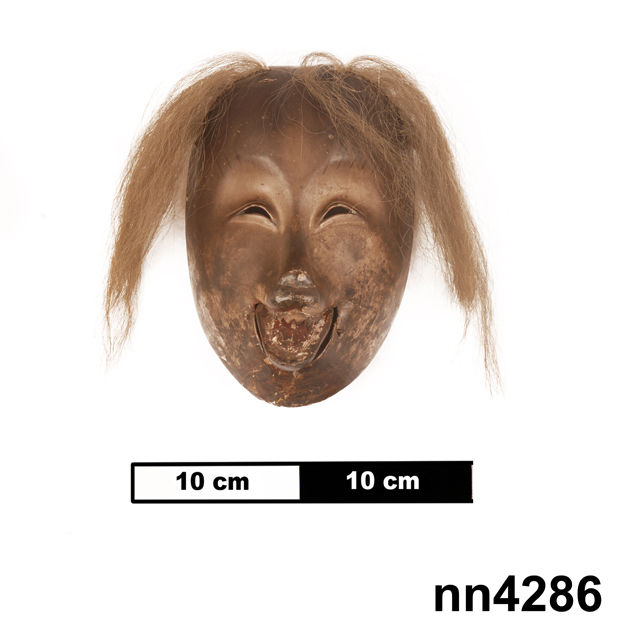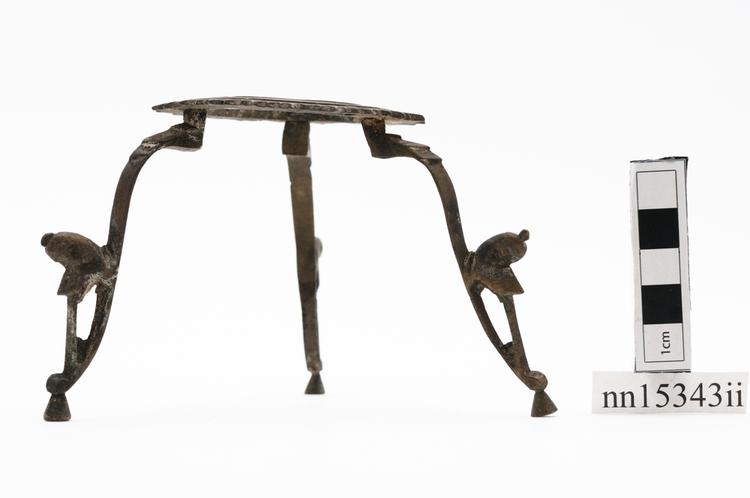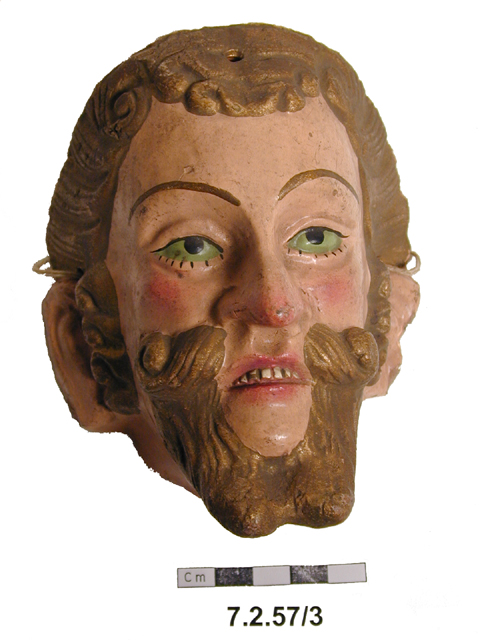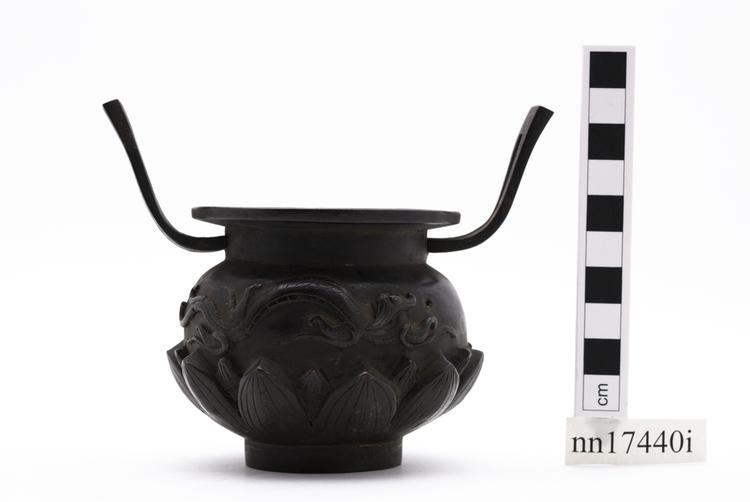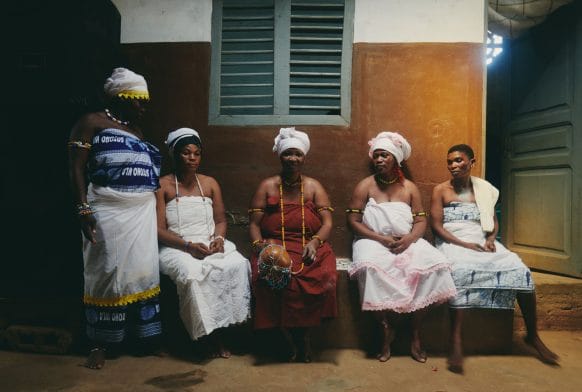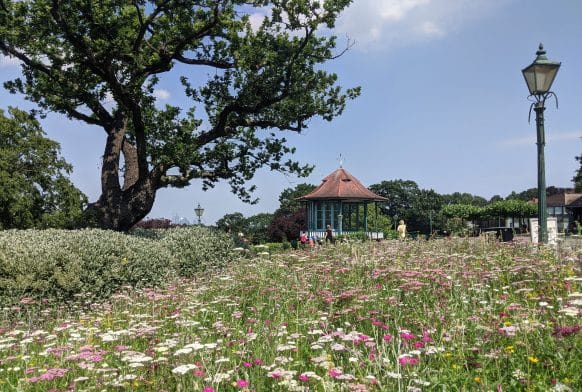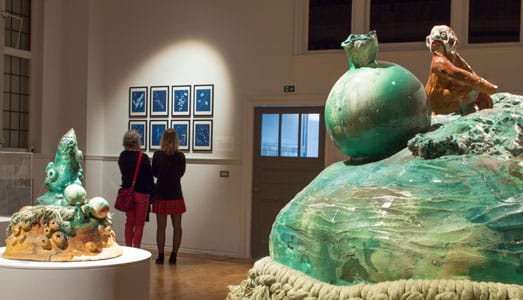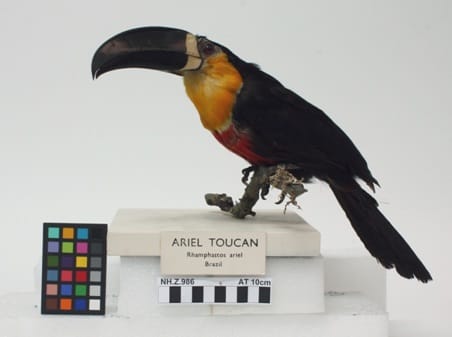Figural male ancestral suspension hook of wood, painted all over with black paint overlaid with fine white line-painting. Instead of feet, the figure has a wooden bar, upturned at both ends into hooks, from which food and manufactured objects were suspended to keep them away from rats.
Ancestor Image Suspension Hook, Samban, Iatmul people, Middle Sepik River, Papua New Guinea Suspension hooks such as this are among the most significant works of art produced in the Middle Sepik region. They are both practical pieces of furniture, and important ceremonial images. As practical household objects, samban were hung by ropes from the rafters of Iatmul houses, and their lower hooks provided hanging places for bags of food and personal possessions that would otherwise fall prey to rats. As ceremonial images, samban represent clan animal totems and, in this case, important ancestors or waken. It was these ancestral waken spirits who were responsible for causing food to grow in the first place, and so they were invoked to preserve what they had provided. When an important event or crisis occurred, the samban was also used as a way of communicating with the ancestor it depicted, and their advice would be sought when making important decisions that affected the fate of their descendants. Wood, pigment. Late 19th Century. Formerly in the private collection of Mr A. Garcia and sold to the Horniman Museum in 1927.



